Today I am thinking of how grateful I am to be here. In this magical place. Under the freaking ice.
Of the officially recorded USAP divers (both McMurdo & Palmer Stations), 99 of the 400 – 500 (the number is somewhere in this range) have been women. On Wednesday, Rowan and I got to be 100 and 101.
The next day, for my birthday, I got to do my first science dives collecting samples (the first two were warm ups, or…maybe cool downs? idk.). It was the best birthday present ever. On the ride out to the dive site (below), Rob and I talked about what a magical coincidence it is that we were born during this time. Diving first started in Antarctica in the 60s – people wore wet suits and let’s be clear that is way hardcore and must have been MISerable. So if we omit those years and think about how long in human history diving has been and will be possible, from the 80s until….an unknown, but potentially soon time in the next 100 years when there is no longer seasonal sea ice to dive through, that’s a shockingly small blip in time. A shockingly small window in which one would’ve had to be born to be able to do what I got to do on my birthday. In an effort to help others imagine this magical experience, here’s a description of that our first few days of diving have looked like. There is plenty more footage to come!
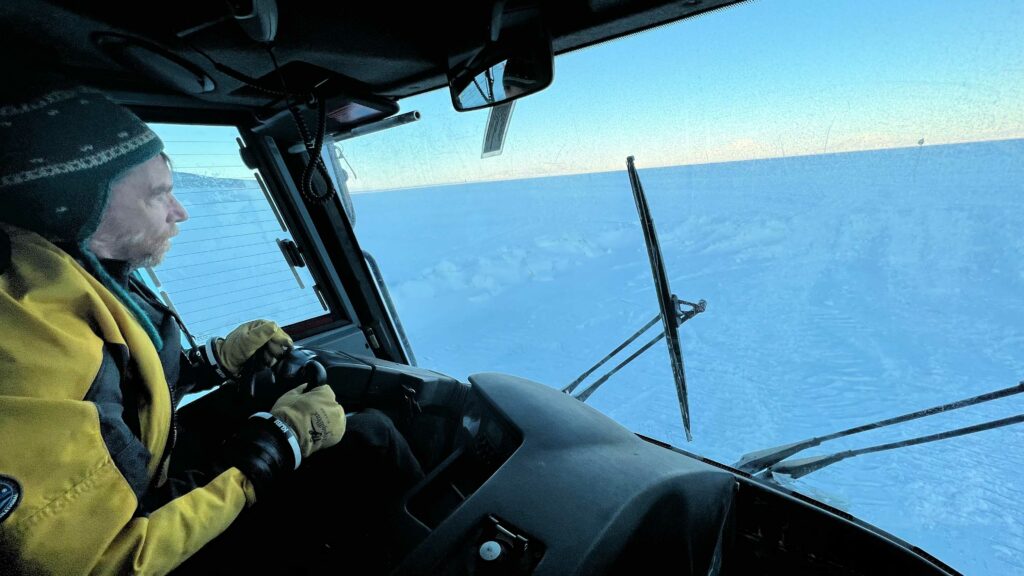
First, after prepping our diving and science gear and getting all kitted up at the dive locker, we load up and drive out to the dive site in a tracked PistenBully vehicle (see Rowan’s last post if you’re curious). It’s a bumpy ride, but much better once you cross the transition from land to sea ice. These vehicles were made originally for grooming slopes, but on McMurdo serve the unique purpose of getting divers from town to their dive holes out on the sea ice.
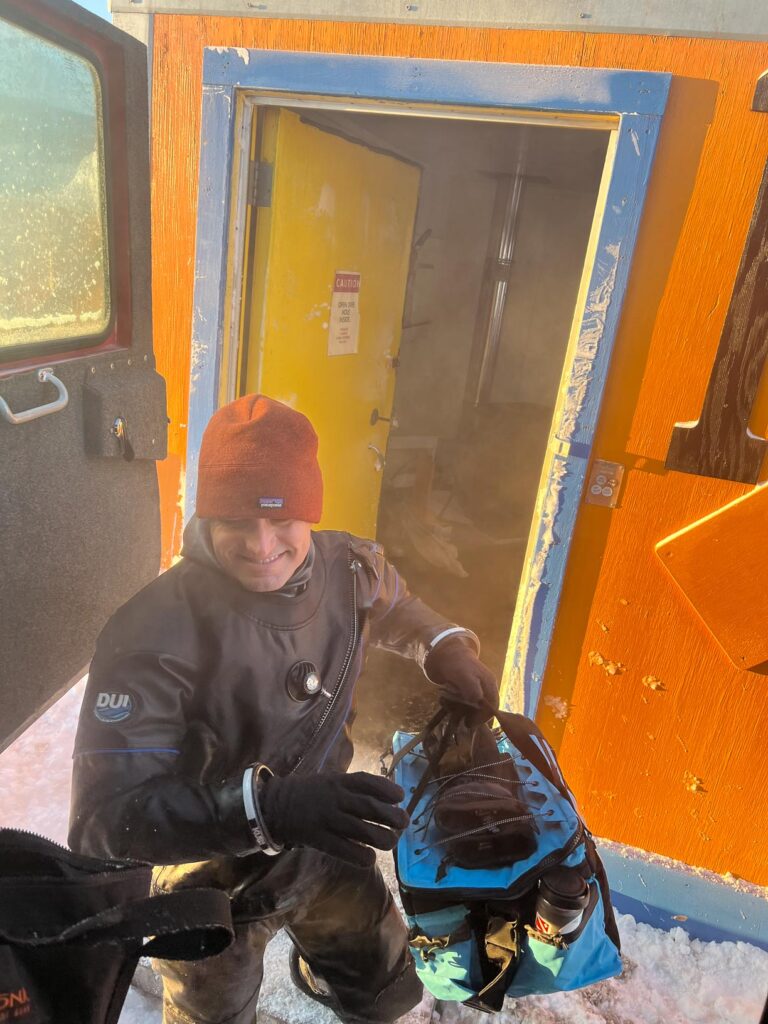
And we have the luxury of that dive hole being in a warm hut! Once we pull up to the hut, we unload all our gear into what has become a very steamy hut since opening the door to the cold world outside.

The plastic tube contraption hanging from the ceiling above our hole has a fan on top and does the very important job of blowing warm air into the dive hole and keeping it open. It’s no easy job getting the hole drilled and if left alone it would freeze back over very quickly. After removing the fan, we clip our dive gear onto loops at intervals along the descent line (which Andrew is holding above) and carefully drop it into the water. This is super helpful and allows us to get through the hole without clumsily clinging to a bunch of stuff or clipping it to our already bulky gear.
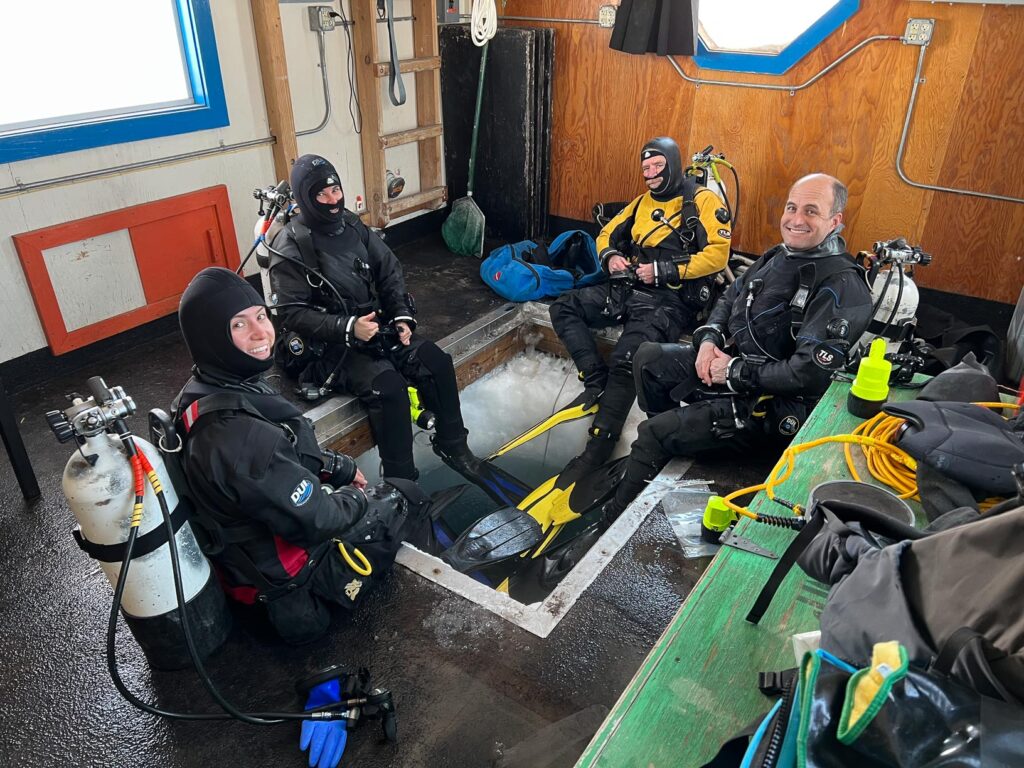
Once the gear is in, we all get the rest of our kit on alongside the dive hole. This process involves much whining and old man grunting and is only possible with the help of our lovely dive tenders – folks from the McMurdo community who take a break from their jobs to help us load up and prep for our dives.
And then, one by one, we all jump in, twisting around and aiming our tanks toward the middle of the hole. I’ll describe my first time through the magical portal into the under ice world. After chaotically (at least I felt chaotic) descending through a 2 meter (but seemingly eternal) tunnel filled with pieces of ice, you blink your eyes into a dark and cold expanse. Soon the down line, which has blinking lights along it so you can find your way back into the hole, becomes clear. It takes a while to gain spatial awareness and take it all in. I was so busy thinking about my kit and getting acquainted with my new dive watch that I didn’t even notice the blue crystal-covered wall in the distance. That wall is the edge of the jetty upon which McMurdo’s water intake system sits.
Our first dive, we dropped down to the bottom of our down line, which ends at about 72 ft under water. I couldn’t believe my eyes as I stared at the blue wall beyond, the glowing streaks of blue tidal cracks, and the bulbous crystal balls of ice shards along the underside of the ice. After exploring the sea floor and taking in for the first time all the fish, sea stars, urchins, and nemerteans (they’re worms that look like intestines) I had only ever seen in pictures, we moved toward the wall beyond. I tried to flip over and look at the ice ceiling above, forgetting at first that turning to the left would dump the air out of my arm. Right side up turns only! After getting that down I swam sideways, admiring the glowing links between the under ice world and the one I’d left above.
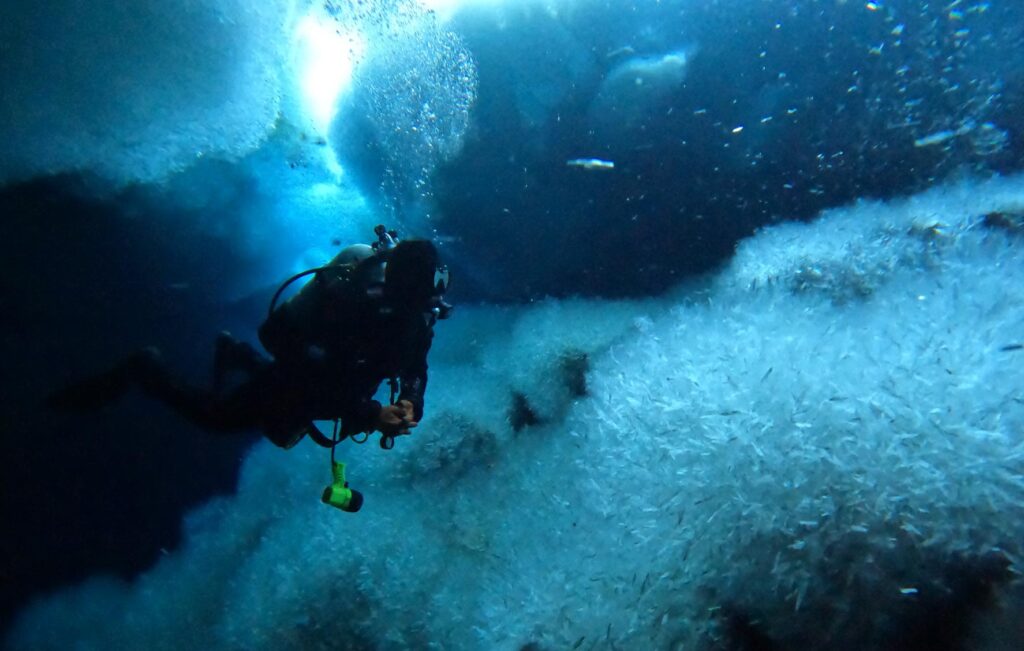
The anchor ice along the jetty was fascinating. The closer I looked the more creatures I noticed hiding in its crevices. Every time my fin or hand brushed the ice, fragments would float up like icy confetti. I didn’t even notice the cold. Our safety stop flew by, that’s 3-5 minutes at 15 ft to prevent nitrogen in our blood stream from forming bubbles and problems.
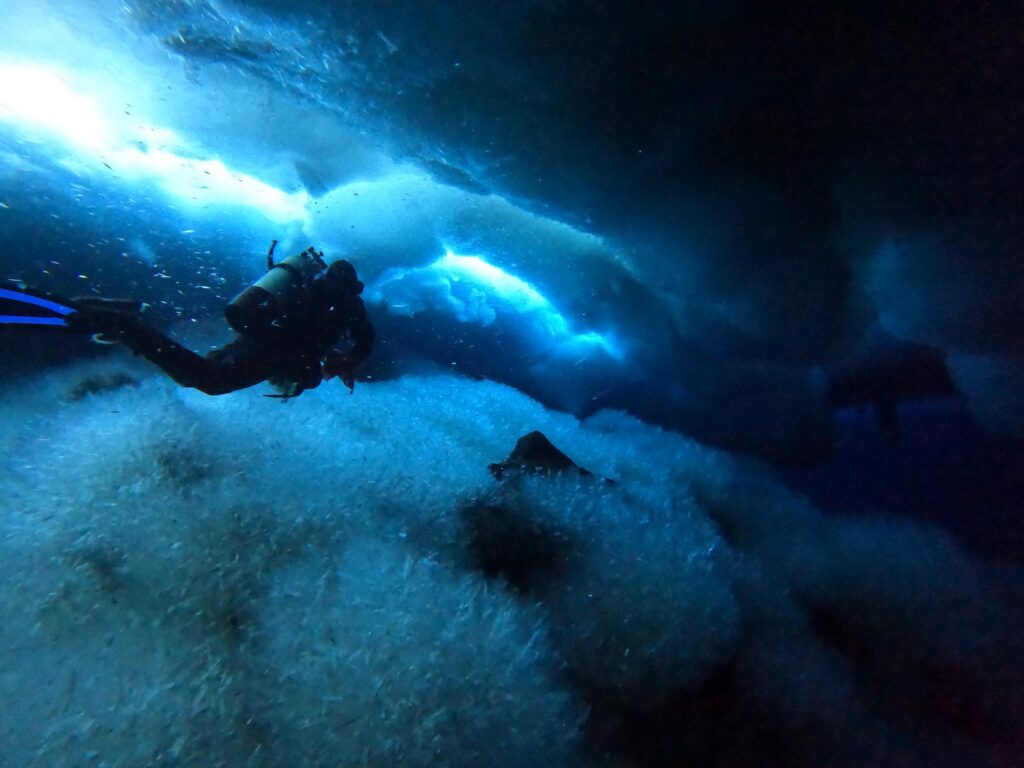
After spending our time admiring the shallows, we made our way back to the dive hole. Looking at the blinking lights in the distance I imagined it was close, but I was quickly reminded that Antarctic visibility (usually many hundreds of feet during this time) can be deceiving. After finally making it to the dive hole, one by one we each ascended back into the over world.
Under water you’re weightless – you forgot how much gear you’re wearing and the fact that it weighs more than 100 lbs. Once through the hole, your old friend gravity quickly welcomes back. You cling to the ladder for dear life, awkwardly attempting to unclip your gear so a tender can pry it free from your shoulders. Once you’ve hauled yourself up and gotten off your weight belt, you feel like a new human. A still very uncomfortable new human. It’s not until you manage to tear off your mask, and three layers of hoods that you feel like a real human again.


After processing urgent samples along the side of the dive hole, its time to load back into the PistenBully and drive back to town.
You never look at the sea ice quite the same after your first dive. It’s a magical thing to know what lays beneath. It’s a sharp contrast to the sunny, white, glittering world we live in above.
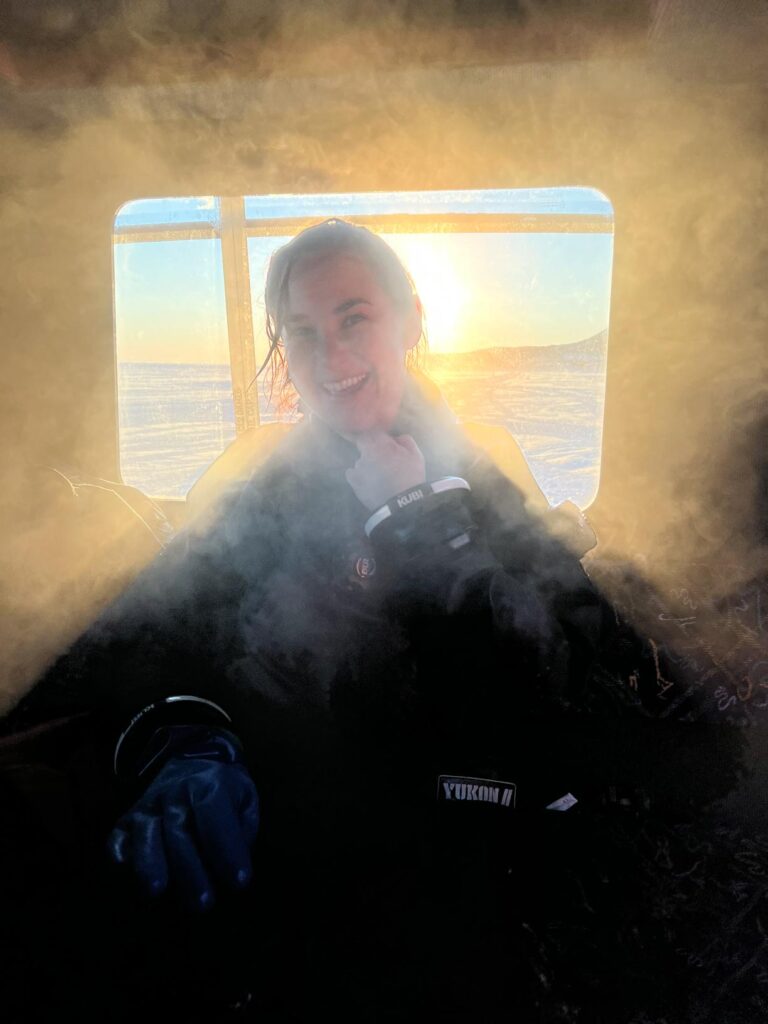
In honor of our first dive, Rob gifted Rowan and I each patches. As a collector of patches and stickers, I can easily say this is the one I will cherish the most. Not only will it always remind me of my rare privilege of diving under the Antarctic ice, of all the experiences in my life that brought me here to this magical moment, but it’ll also remind me of the extremely cool person who gave it to me. Rob has been diving here for the last 44 years and there’s no teacher I would rather have had under water with my on my first dive. My first dive, I was nervous – about the gear, about the conditions, about messing something silly up – but with Rob and the rest of my team there I knew I’d be okay no matter what and that’s a feeling I’m very grateful for. Every time since I’ve gotten more and more confident, and now after 5 dives I’m feeling just fine about each time I plunge through our magical ice tunnel, thanks to my awesome team.


